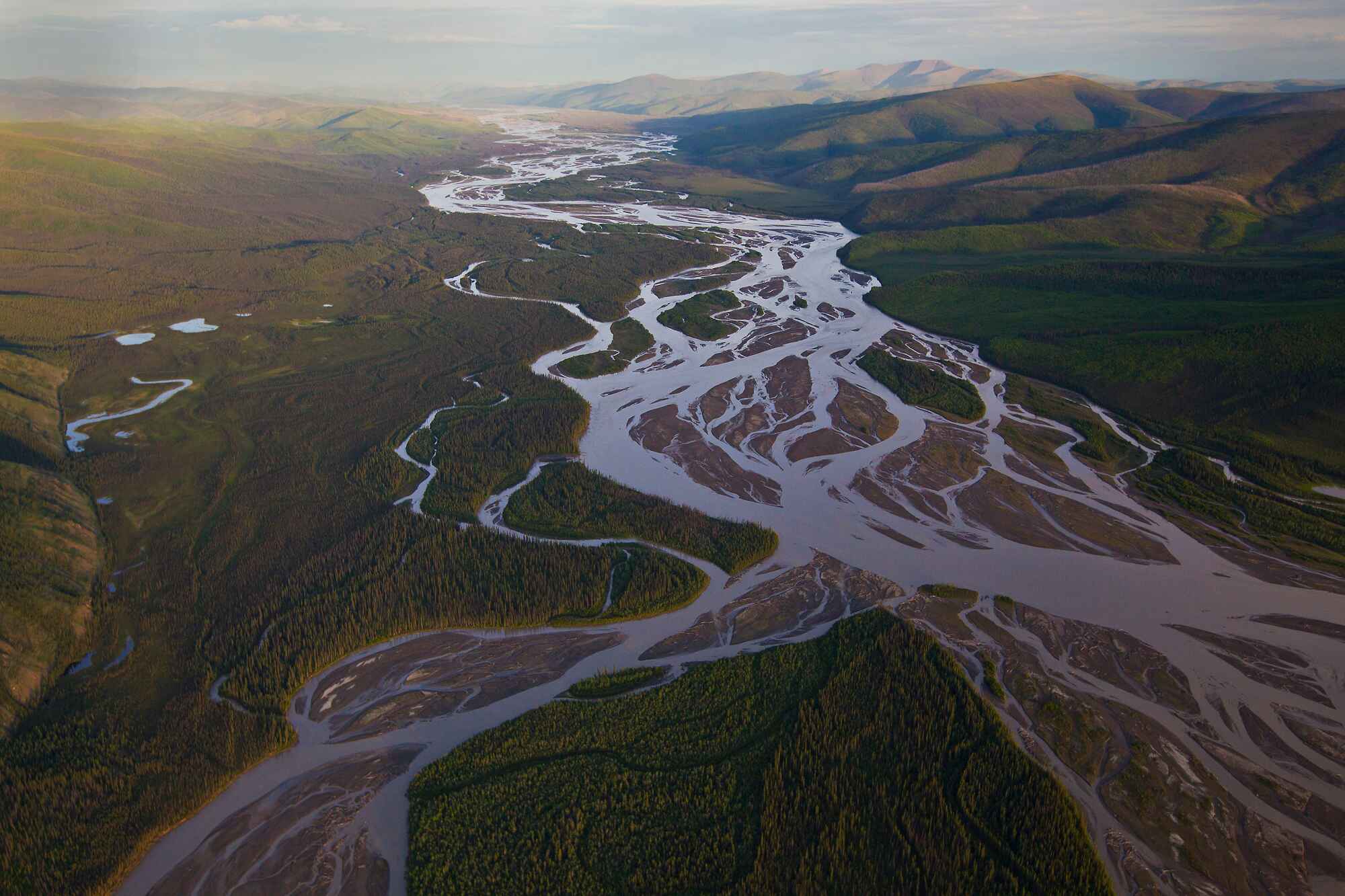
When it comes to the fascinating world of geography, floodplains are truly intriguing. These low-lying areas adjacent to rivers and streams play a crucial role in the natural cycle of water and support a diverse range of plant and animal species. Floodplains are not just ordinary pieces of land; they are dynamic ecosystems that are constantly evolving and adapting to the forces of nature.
In this article, we will delve into 18 intriguing facts about floodplains that will give you a deeper understanding and appreciation for these unique landscapes. From their importance in flood control to their rich agricultural value, floodplains have much to offer. So let’s dive in and explore the wonders of floodplains and the vital role they play in our world.
Key Takeaways:
- Floodplains are vital ecosystems that support diverse wildlife, filter water, and provide natural flood control. They are dynamic, ever-changing landscapes with historical significance and a promising future in flood management.
- Floodplains play a crucial role in flood control, groundwater recharge, and agriculture. They are home to diverse ecosystems, provide economic benefits, and require effective management to address climate change challenges.
The Definition of a Floodplain
A floodplain is a flat or nearly flat land area adjacent to a river or stream that experiences periodic flooding. It is formed by sediments deposited during flood events.
Floodplains Support Diverse Ecosystems
Floodplains are home to a rich variety of plant and animal species. The regular flooding helps replenish soil nutrients and creates a dynamic environment suitable for diverse habitats.
The Importance of Floodplains in Flood Control
Floodplains act as natural buffers during heavy rainfall and snowmelt events, providing storage areas for excess water. This helps reduce the risk of downstream flooding.
Floodplains are Agricultural Hotspots
Floodplains are known for their fertile soils, making them ideal for agriculture. Many farmers rely on floodplain areas for crop production and grazing.
The Role of Floodplains in Groundwater Recharge
When floodplains are inundated with water, it seeps into the ground and contributes to the recharging of underground water sources. This helps maintain water levels in wells and aquifers.
Floodplains Provide Natural Habitat for Wildlife
Floodplains are crucial habitats for various species of birds, mammals, and reptiles. The abundant food resources and shelter options attract a wide range of wildlife.
The Formation of Meanders in Floodplains
Floodwaters, over time, erode the outer banks of rivers and deposit sediment on the inner banks, forming meanders. These curves are a common feature of floodplain landscapes.
Floodplains are Dynamic and Ever-Changing
Floodplains are shaped by the forces of nature, constantly evolving with the ebb and flow of water. This makes them fascinating areas to study and explore.
The Economic Benefits of Floodplains
Floodplains provide opportunities for recreational activities such as fishing, boating, and birdwatching. This, in turn, boosts tourism and local economies.
Human Settlements on Floodplains
Floodplains have attracted human settlements for centuries due to their fertile soils and proximity to waterways. However, this poses challenges in terms of flood management and disaster resilience.
The Role of Floodplains in Water Filtration
As floodwaters seep into the ground, floodplains act as natural filters, removing pollutants and improving water quality. They play a vital role in maintaining healthy ecosystems.
Floodplain Restoration Efforts
Many countries have recognized the importance of preserving and restoring floodplain ecosystems. These restoration projects aim to enhance flood protection, biodiversity, and overall environmental health.
The Historical Significance of Floodplains
Floodplains have often played a crucial role in human history, providing fertile grounds for agriculture, transportation routes, and trade hubs.
Floodplains and Climate Change
With the increasing frequency and intensity of extreme weather events, floodplains are vulnerable to changes brought about by climate change. Effective management and adaptation strategies are necessary.
The Collaboration Between Science and Traditional Knowledge
Floodplain management benefits from the integration of scientific research and traditional knowledge systems, ensuring a holistic approach to understanding and preserving floodplain ecosystems.
The Importance of Floodplain Education and Awareness
Creating awareness about floodplains is crucial in fostering a sense of responsibility towards these valuable ecosystems. Education empowers individuals to make informed decisions and contribute to their preservation.
Floodplains as Natural Water Storage Systems
Floodplains act as natural reservoirs, storing excess water during flood events and gradually releasing it, preventing sudden surges and minimizing flood risks downstream.
The Future of Floodplain Management
With ongoing advancements in technology and a growing understanding of floodplain dynamics, the future of floodplain management holds great promise for mitigating flood impacts and protecting these unique environments.
Conclusion
In conclusion, floodplains are fascinating and dynamic geographical features that play a crucial role in the Earth’s ecosystem. They are not only important for filtering water, but also for supporting a diverse range of plant and animal species. Understanding floodplains can help us mitigate the impact of flooding events and protect our communities from natural disasters. By learning about the unique characteristics and functions of floodplains, we can appreciate the important role they play in maintaining the balance of our environment.
FAQs
1. What is a floodplain?
A floodplain is a flat or low-lying area adjacent to a river, stream, or other water body that is prone to flooding.
2. How are floodplains formed?
Floodplains are formed over time as rivers deposit sediment onto their surrounding areas, creating flat and fertile land.
3. What is the purpose of floodplains?
Floodplains serve several important purposes, including providing natural flood control, storing excess water during floods, and supporting unique ecosystems.
4. Are floodplains dangerous?
While floodplains can be prone to flooding, they also have important natural mechanisms for regulating water flow. Proper land management and understanding of floodplain dynamics can help mitigate the risks associated with flooding.
5. Can floodplains be developed?
While it is possible to develop floodplain areas, it must be done with careful consideration of the potential risks and impacts. Building on floodplains can increase the vulnerability to flooding and disrupt the natural functions of the ecosystem.
6. How do floodplains benefit wildlife?
Floodplains provide vital habitats for a wide variety of plant and animal species. They offer abundant food sources, breeding grounds, and migration routes for wildlife.
7. Can floodplains be restored?
Yes, floodplains can be restored through various methods, including levee setbacks, reforestation, and wetland restoration projects. These efforts aim to recreate the natural functions of floodplains and promote their ecological health.
8. Are floodplains important for agriculture?
Yes, floodplains are highly fertile areas that have been historically used for agriculture. They provide nutrients for crops and can support sustainable farming practices.
9. Are floodplains the same as wetlands?
While floodplains and wetlands are often adjacent to each other, they are not the same. Floodplains are broader areas that are subject to periodic flooding, whereas wetlands are areas permanently saturated with water.
10. How can I visit or explore a floodplain?
Many areas have designated parks, nature preserves, or hiking trails that allow visitors to explore and learn about floodplains. Check with local authorities or conservation organizations for opportunities to experience these unique ecosystems firsthand.
Floodplains play a vital role in our ecosystems, offering flood control, biodiversity, and agricultural benefits. Their dynamic nature and importance in groundwater recharge make them essential for supporting wildlife and human communities. Floodplain restoration efforts aim to preserve these unique landscapes for future generations, while collaboration between science and traditional knowledge helps us better understand their complexity. As we face the challenges of climate change, educating ourselves about floodplains becomes increasingly crucial. Want to learn more? Explore surprising floodplain facts, discover the fascinating world of bald cypress trees, or dive into the intriguing history of the Nile River floodplain.
Was this page helpful?
Our commitment to delivering trustworthy and engaging content is at the heart of what we do. Each fact on our site is contributed by real users like you, bringing a wealth of diverse insights and information. To ensure the highest standards of accuracy and reliability, our dedicated editors meticulously review each submission. This process guarantees that the facts we share are not only fascinating but also credible. Trust in our commitment to quality and authenticity as you explore and learn with us.


